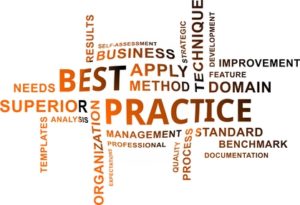People often underestimate the power of the back office, instead preferring to focus their attention on the front. Yet for forward-thinking businesses, the front office is just the tip of the iceberg; with its vast scale and scope, the back office actually offers the greatest opportunity for improvements that can result in faster services, cost effectiveness, business sustainability and a competitive advantage.
Although businesses have been improving the function of back offices for the past 20 years, not many developments have been made. Companies are still struggling to deliver real-time insight into day-by-day activity, meaning that managers are still unable to make fact-based decisions in order to improve productivity and efficiency. A new approach to back office management is needed – and it is here that the behind-the-scenes back office can take more than a few hints and tips from its customer-facing front office counterpart.
The link between front and back office operation when it comes to customer satisfaction and loyalty is staggering: 30-40% of the customer centre workload is generated by the back, while the front office reciprocates by generating 20-30% of back office work. All waste that can be eliminated. With customer loyalty being the aim of the game in today’s increasingly competitive market, it’s clear to see how important it is that both front and back work together seamlessly.
Yet, in comparison to the forward-thinking focus given to the front office, the back office processes remains dated. Issues with processing, siloed departments and conflicting data means that opportunities for improvement are frequently overlooked because the data is not transparent . In order to make noticeable improvements, managers need to be able to access real-time data to create a framework to understand and compare performance between functions and generate meaningful, actionable reporting.
Here is a powerful yet simple rule. Always give people more than they expect to get.

Typical challenges faced by the back office include:
Data Capture
With differing legacy systems combined with manual processes, it’s difficult to capture real-time data that accurately reflects employees’ actual work.
Standardised Framework
Managers typically measure performance by different standards and therefore have difficulties creating a standardised framework to accurately represent and clearly understand all departments and functions.
Meaningful Reporting
The acquired data needs to be reported in a fashion that is actionable, translating it into measurable and credible automatic KPIs so that managers can identify problems and improve on them.
A state of constant fire fighting has become the norm
Given the difficulties facing them, back office managers frequently have to rely on their ‘sixth sense’ to predict workflow or just simply react to changing workloads in a disruptive fashion - meaning they are constantly firefighting rather than working towards improvement and sustainability. The single biggest problem is that none of the typical tools used to manage workflows have any real-time data or predictive capabilities, which in turn leads to high labour costs, inconsistent work quality, inaccurate forecasting, missed deadlines, customer satisfaction issues and employee satisfaction and engagement issues.
In comparison, workforce optimisation in the front office is way ahead of the back office. The result of work force optimisation speaks for itself, with organisations benefitting from a strong ROI, higher revenues, greater customer satisfaction and loyalty, lower operational costa and better employee moral and retention.
If you can’t describe what you are doing as a process, you don’t know what you’re doing

Typical BO or CC optimisation processes include:
Forecasting and Scheduling
Ensuring that the right people with the right skills are in the right place at the right time by using a combination of historic volumes and sophisticated forecasting. Work volumes are also predicted, allowing managers to align employee schedules with forecasted work volumes.
Quality Monitoring and Assurance
Desktop PC screens are recorded and assessed to focus on conformance to policy and best practices, along with screen navigation effectiveness.
Performance Management
Each employee has a scorecard to indicate performance goals and their personal achievements against them. These are shared with team leaders and managers to achieve a multi-level view of performance.
With such huge success in contact centres, it’s not a far leap to apply the same discipline to back offices. Of course there are different processes to be modified and different problems recognised, but numerous leading companies are now looking to transform their back office in the same way they have the front. Unfortunately you can’t just use the same technology and training in the front office and replicate it in the back office. The back office is a more complex environment and there are different challenges to overcome which need a blend of technology and management training to deliver operational excellence.
In order to successfully transform back office functions, companies must build on and implement solutions that help to manage and monitor their people. Back office work force optimisation is essentially a strategy that includes a systematic, data-driven process for aligning work volumes to resources, monitoring the effectiveness and productivity of employees, while measuring performance, identifying skill gaps and delivering coaching and training to improve those gaps.
It's not just a technological fix – it is a business process in its own right and the people behind the process are vital to its success. Managers need to be trained and values instilled to ensure that despite the many organisational structures, everyone is on the same page. Back office work force optimisation is only just taking off, but early adopters are seeing real improvements, including faster turnaround times, improved quality, greater throughput, and improved productivity.



